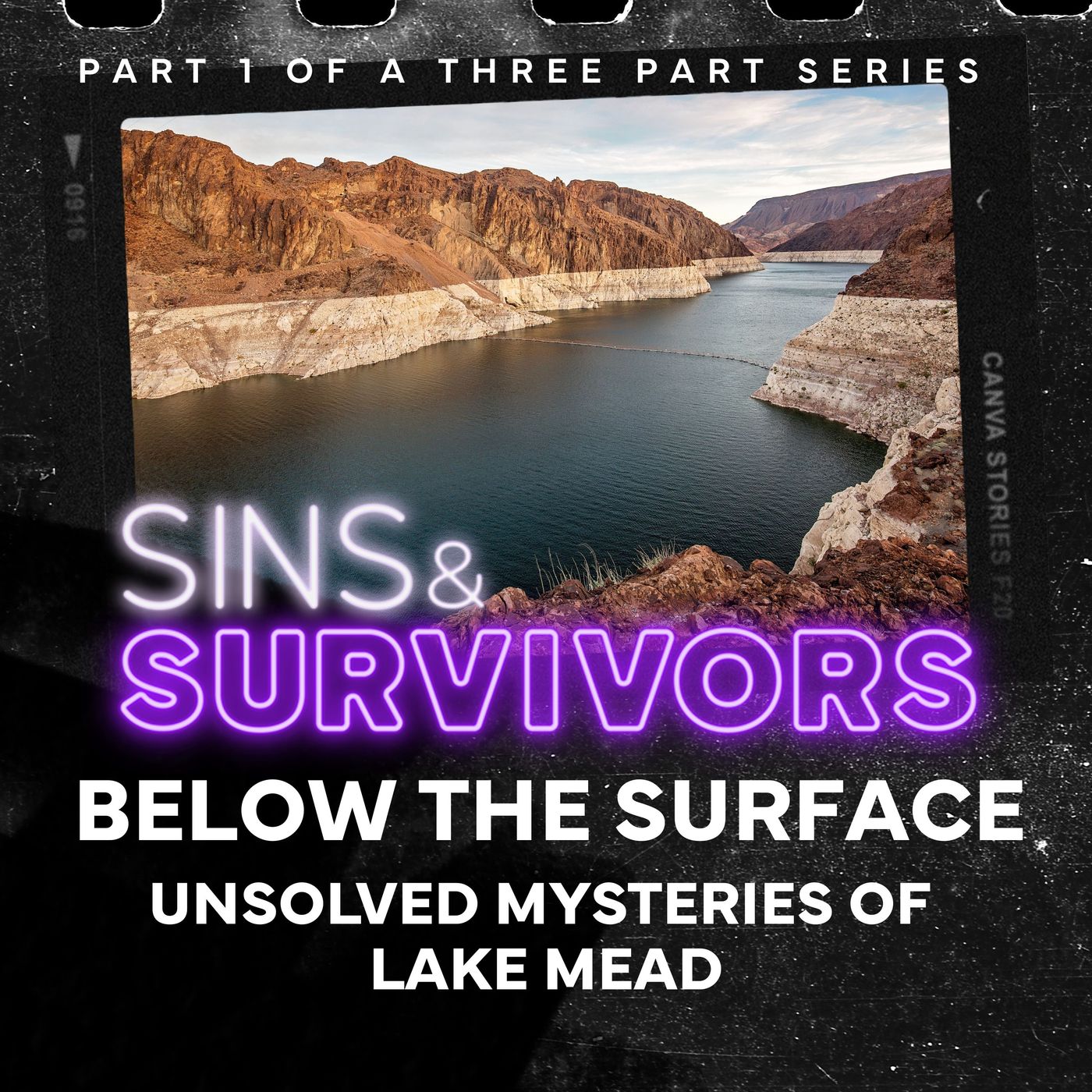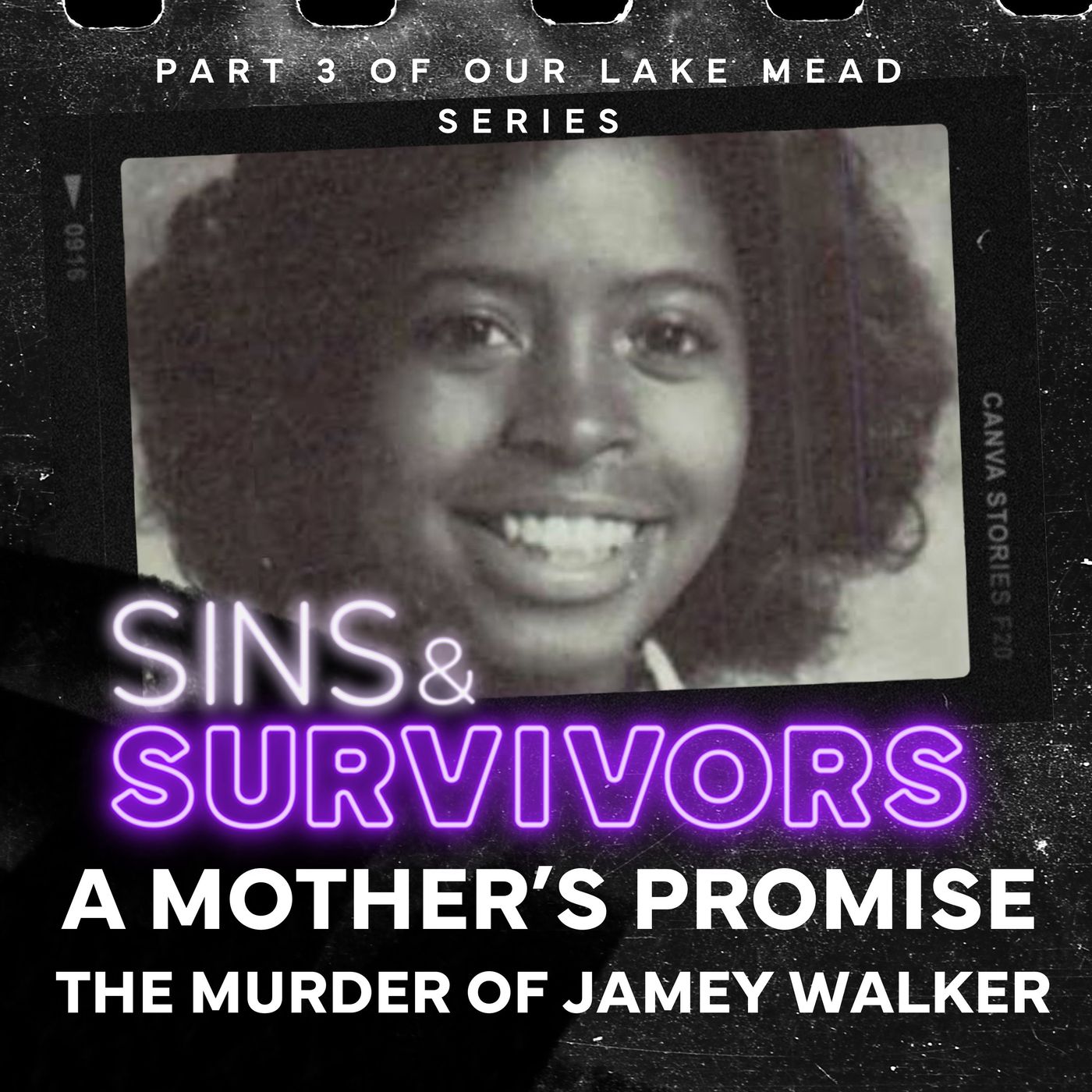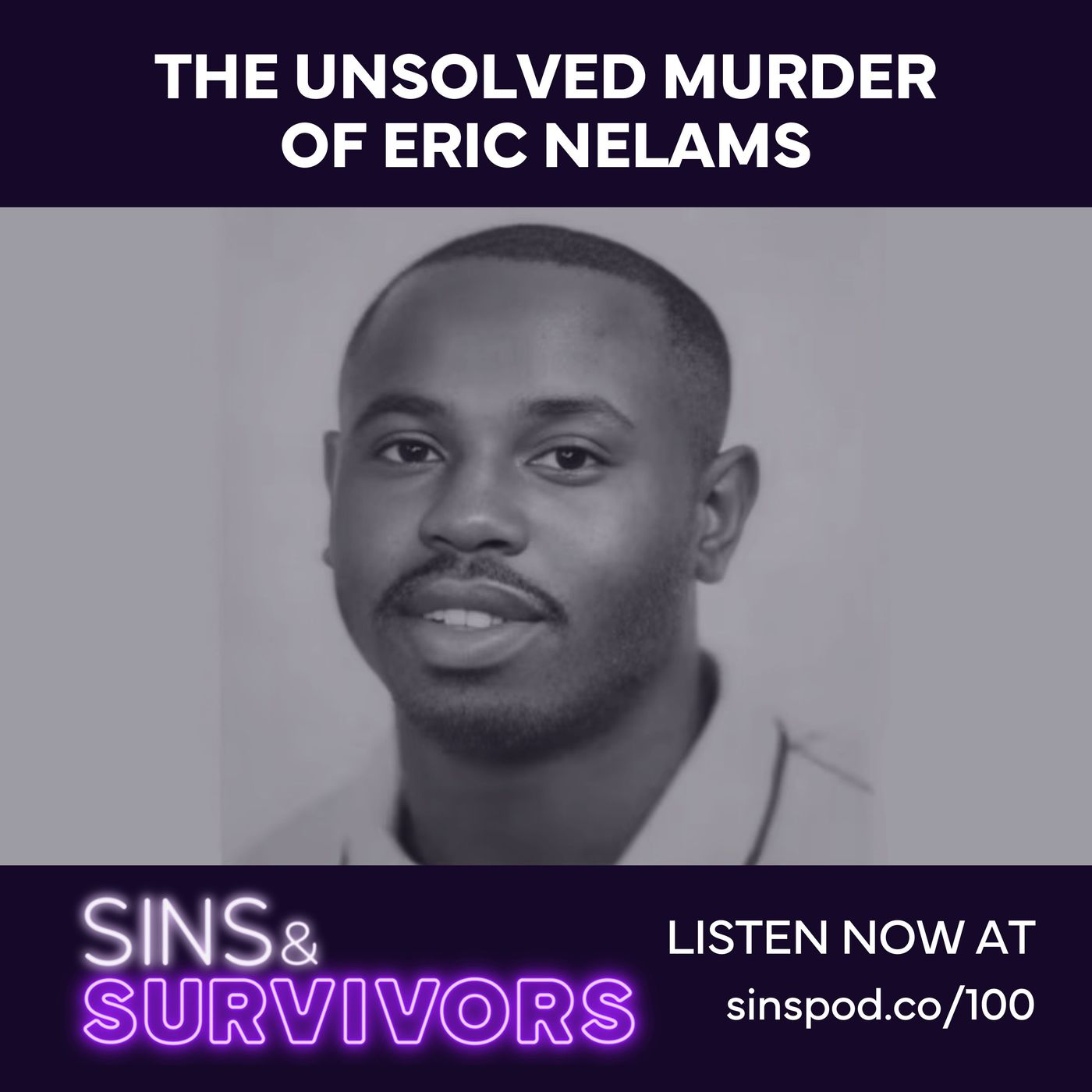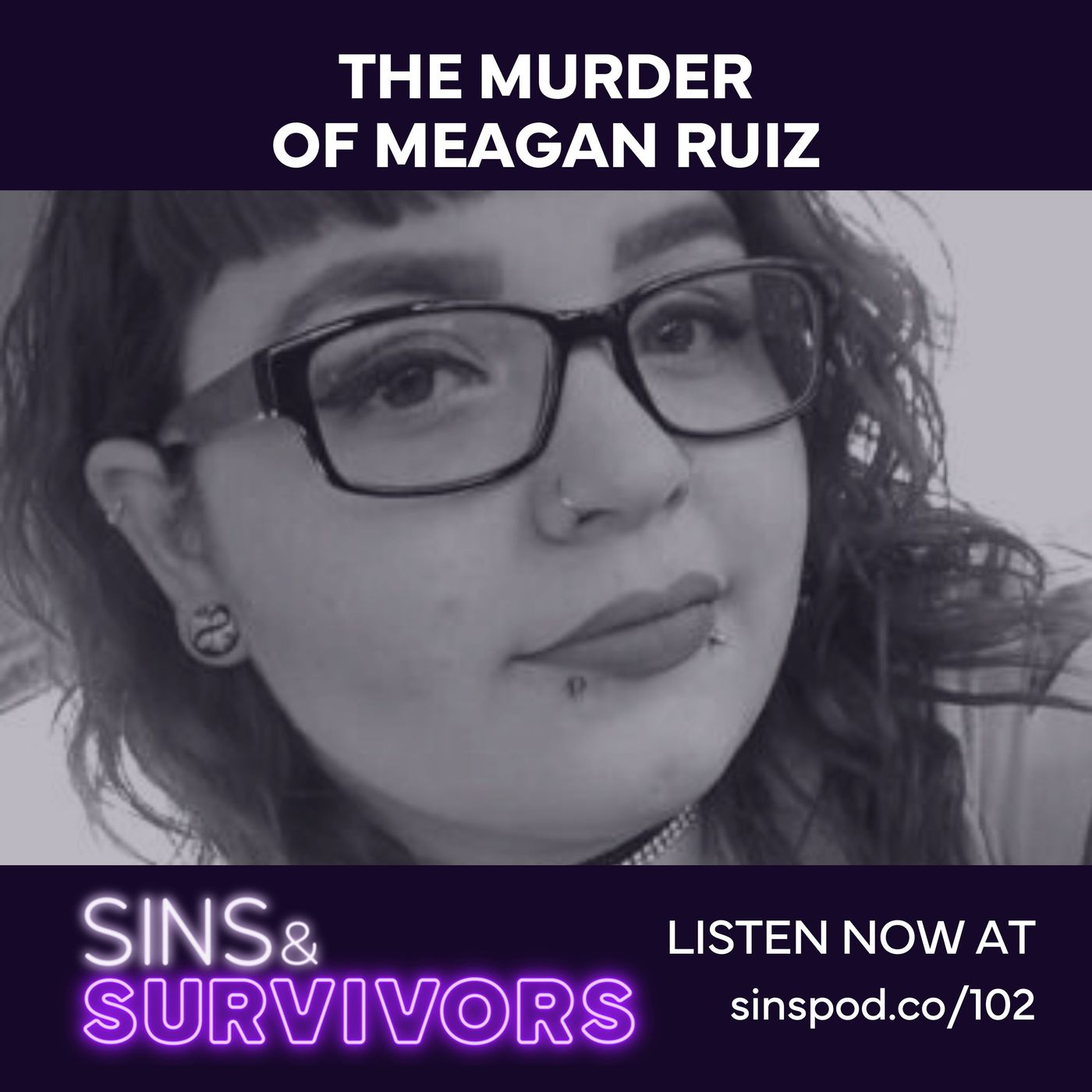30 Year Cold Case - The Murder of Melonie White

A young mother found dead in 1994. A DNA breakthrough in 2024. Who was Melonie White—and who killed her?
In August of 1994, two hikers made a grim discovery on Lake Mead Boulevard... The remains of a young woman at the bottom of a gypsum wash. The victim was Melonie White, a 27-year-old mom who had recently moved to Las Vegas with her boyfriend.
What happened was decades of agonizing silence with her friends and family wondering who could have done this. Today we’ll talk about what we know about Melanie and the events that brought closure after almost 30
https://sinspod.co/81
https://sinspod.co/81blog
https://sinspod.co/81sources
Domestic Violence Resources
http://sinspod.co/resources
Click here to become a member of our Patreon!
https://sinspod.co/patreon
Visit and join our Patreon now and access our ad-free episodes and exclusive bonus content & schwag! Get ad-free access for only $1 a month or ad-free and bonus episodes for $3 a month
Apple Podcast Subscriptions
https://sinspod.co/apple
We're now offering premium membership benefits on Apple Podcast Subscriptions! On your mobile device
Let us know what you think about the episode
https://www.buzzsprout.com/twilio/text_messages/2248640/open_sms
Become a supporter of this podcast: https://www.spreaker.com/podcast/sins-survivors-a-las-vegas-true-crime-podcast--6173686/support .
Episode # 81 - Melonie White
[Shaun]
In August of 1994, two hikers made a grim discovery on Lake Mead Boulevard... The remains of a young woman at the bottom of a gypsum wash. The victim was Melonie White, a 27-year-old mom who had recently moved to Las Vegas with her boyfriend.
[John]
What followed were decades of agonizing silence, with her friends and family left wondering who could have done this. Today, we’ll talk about what we know about Melanie and the events that brought closure after almost 30 years.
(Music - Pause for 8 seconds)
[Shaun]
Hi and welcome to Sins and Survivors, a Las Vegas true crime podcast, where we focus on cases that deal with domestic violence, as well as missing persons and unsolved cases. I’m your host, Shaun
[John]
And I’m your co-host, John.
[Shaun]
This week we’d like to share another amazing cold case solve brought to you by the incredible dedication of the Las Vegas Justice League, and also the cold case division of Metro Police.
This was one of the very first cases taken up by the Las Vegas Justice League back in 2021, and it turned out to be the 9th case solved locally and brought the nationwide count of solved cases they helped fund to 41, which is, as we always say, Amazing.
The entire Las Vegas Community is eternally grateful for their ongoing work and relentless pursuit of solving every open cold case possible.
Do you want to start us out?
[John]
Of course. For today’s case, we’re going back to 1994, when Las Vegas only had 330,000 or so residents (compared with over 665,000 today) and Henderson had only 115,000 (compared with almost 350,000 today). People talk about the population of Las Vegas as being over 3,000,000, but that includes the whole metropolitan area, the city itself is obviously much smaller.
It's grown a lot, and expanded a lot in land size too, which we’ve covered before. Back in 1994, Henderson and Las Vegas didn't even border each other, there was quite a bit of open desert between them.
So back in 1994, two male hikers were hiking down Lake Mead Blvd which at that time was pretty desolate but is quite built up now. They were near the entrance to the Lake Mead Recreational area when they made their grisly discovery.
It was the recent remains of an adult female in a gypsum wash right off Lake Mead Boulevard near a dirt turnout. The hikers called metro police who responded and took charge of the investigation.
Unlike so many cases like this that we cover, they identified the victim quickly as being 27 year old Melonie White.
[Shaun]
Melonie moved to Las Vegas in the spring of 1994, chasing a fresh start with her boyfriend and her two-year-old son. Her family—including her mom and two younger brothers, Walter and Jason, who were both in college at the time—were still in Phoenix.
According to them, she spent a lot of time going back and forth between the two cities, caught between where she came from and where she was hoping to go.
Walter said she was at a bit of a crossroads—figuring out her next move, trying to land on a career that felt right. She was hopeful, but like a lot of people in their twenties, she was still finding her footing.
It might not have been the easiest time to build a life in Las Vegas, though. The recession that hit the U.S. in the early ‘90s had technically ended, but here, the recovery was slower.
Tourism hadn’t fully bounced back, and jobs were hard to come by—especially for someone young, new to town, and trying to start from the ground up.
Her brothers also said she had a super kind heart—the kind of person who genuinely cared about others. Jason described her as gentle and thoughtful, the kind of sister who listened more than she spoke. Walter said she had a bright spirit and loved fashion—something that gave her confidence and joy.
As we said, she was also a young mom, doing her best to carve out a life for herself and her son. Her family could see how hard she was working to make that happen.
Walter said he’d helped her move a few times, so he wasn't concerned at what he called her “bouncing back and forth”, he was sure she’d land on her feet and figure it all out for herself.
After not hearing from her for an extended period, her family reported her missing in June or July of 1994, but there are other reports that conclusively state that friends of hers saw her on August 26th, 1994 in the area of 15th street and Fremont.
[John]
At first, investigators did what they could with what they had. The crime scene was isolated, and detectives noted early on that it looked like Melanie’s body had been dragged there—possibly from a nearby vehicle. It was a remote spot, the kind of place you’d only find if you were out hiking, which is exactly what happened.
After the Clark County coroner confirmed her identity, her cause of death was quickly ruled a homicide: strangulation with a ligature, along with blunt force trauma to the head.
It was a brutal, personal kind of violence. Police followed up on leads, interviewed people who might’ve seen her in the days prior, and tried to piece together her movements. But the trail went cold quickly.
There was no obvious suspect. No weapon. No clear motive. And so, despite the efforts made in those first few days, the case stalled. Melanie’s name was added to a growing list of unsolved homicides in Las Vegas, and her family was left with nothing but questions—about who could have done this, and why.
Remember, in 1994, DNA testing was still in its infancy—especially for local police departments. It had already been used in a few high-profile cases, but it was expensive, time-consuming, and far from routine.
Most departments, including Las Vegas Metro, didn’t have the resources or infrastructure to make DNA analysis a central part of investigations. And even when DNA was collected, there often wasn’t much to compare it to.
The national CODIS database—which today helps law enforcement match unknown DNA profiles to known offenders—was still in its early days.
It launched in 1990, but only a handful of states were contributing profiles at the time. Nevada wouldn’t begin submitting to CODIS until later that decade.
So even though investigators in Melanie’s case preserved DNA from the scene, they were essentially holding onto a clue that couldn’t lead anywhere—not without a name, not without a match.
To their credit, though, Metro did collect and store that evidence. And while we can’t know for sure what they hoped at the time, it’s likely they kept it with the belief that one day, the science would catch up—and finally get them a suspect.
[Shaun]
It wasn’t until 2010—sixteen years after Melanie was killed—that her case saw its first real movement.
The case was re-opened, and investigators went back to the evidence they’d collected at the crime scene in 1994. This time, they submitted it for new testing. The technology had come a long way since then, and now the results gave them something solid: a full male DNA profile, a major step forward.
Finally, something they could work with. The profile was uploaded to CODIS—but... there were no matches. No names.
That told them something. It meant the person who left that DNA had either never been convicted of a qualifying crime—or if they had, it happened before Nevada was contributing DNA to the system. Remember, CODIS launched in 1990, but Nevada didn’t start submitting profiles until later in the decade.
So even with that clue—a full, preserved DNA profile—they still didn’t know who he was. It was a critical piece of the puzzle. But it was still missing a face.
[John]
Ten years later, in 2021, the case got another second wind—thanks to the Vegas Justice League.
You probably remember them—they’re the group in Vegas that raises money to fund advanced DNA testing for cold cases. Melanie’s case was actually one of the first they took on, and like we’ve seen in other cases, their support—along with their partnership with Las Vegas Metro—made all the difference.
With the analysis funded, Metro sent the DNA profile to Othram, the private lab in Texas we’ve talked about before, where they specialize in forensic genetic genealogy—also known as investigative genetic genealogy.
Now, just as a refresher—IGG is very different from a standard CODIS match. CODIS can only tell you if a suspect’s DNA matches someone already in the system, like a convicted offender. But IGG looks deeper. It builds out extended family trees using distant relatives found in genealogy databases—people who’ve uploaded their DNA for ancestry or family history.
We don’t know the specifics of the family tree that Othram built, or who the match was in this case—it could’ve been a cousin, a second cousin, maybe someone even further removed. But that one connection was enough to start narrowing things down.
And by August 2024—almost exactly 30 years to the day after Melonie was found by those hikers—Othram informed Metro that they finally had a name.
[Shaun]
Metro Detective Jason Johansson held a press conference in August 2024, inviting Melonie’s two brothers, along with two members of the Vegas Justice League. That’s where they announced what the family had waited nearly three decades to hear: the man responsible for Melonie White’s murder had finally been identified.
His name was Arthur Joseph Lavery.
Lavery would’ve been 38 years old at the time of the murder. He’d lived in Las Vegas during the 1990s, attended high school here, and had reportedly worked locally as well. But he would never be arrested.
He’d died in 2021, from complications related to COVID, after relocating to California sometime in the mid-2000s.
Police said his only known criminal record was a battery charge—an offense that, at the time, likely wouldn’t have resulted in a DNA sample being collected, especially since Nevada didn’t begin submitting profiles to CODIS until much later.
Detective Johansson pointed out that it’s likely that’s the reason there was no match all those years.
As for any personal connection to Melonie, investigators still weren’t sure. There was no confirmed link between them. Lavery lived in the area of 15th and Fremont at the time, and a few of Melonie’s friends recalled seeing her in that neighborhood the night before she was killed—but it’s not enough to draw any solid conclusions.
At the press conference, her brothers spoke publicly and answered questions from the press.
Jason said that the short conversation with police—when they told him they’d identified the murderer—closed the book on thirty years of not knowing.
Walter agreed, saying he didn’t feel the need to know everything about Lavery. Just knowing who had done this was enough. After decades of silence, they finally had an answer. Not justice in the traditional sense. But maybe... something close to peace.
They also told the press that Melonie’s son is now 33—happy, healthy, and still a deeply important part of their family.
While Lavery will never face justice in a courtroom, this moment still mattered deeply. Melonie’s mother was said to have been shattered by her daughter’s death, and the entire family felt the weight—and the relief—of finally having closure.
[John]
Melonie White was just 27 years old. A young mom, trying to find her footing, doing her best to build a life. She didn’t deserve what happened to her—and for nearly three decades, her story sat unresolved. But it didn’t disappear. Because the people who loved her, and the people determined to honor her, never stopped looking.
This case is what happens when that kind of persistence meets the right technology. The detectives at Las Vegas Metro held onto the evidence, year after year. And the Vegas Justice League, through their fundraising and advocacy, helped turn a cold case into a solvable one.
You can be part of that process too. If you’d like to support cases like Melonie’s, visit dnasolves.com to contribute to active investigations.
And if you’ve taken a consumer DNA test, you can upload your profile to GEDmatch or FamilyTreeDNA and opt in to law enforcement matching. You never know who it might help—or what story it might finally complete.
We’ll be back next week with another new episode but until then we remind you what happens here happens everywhere.













